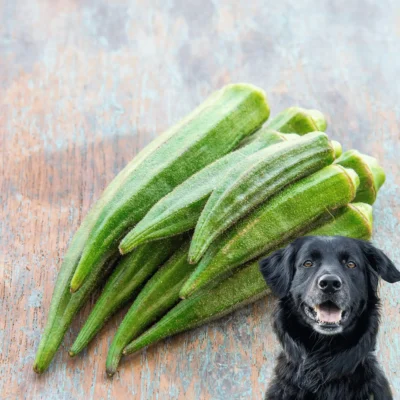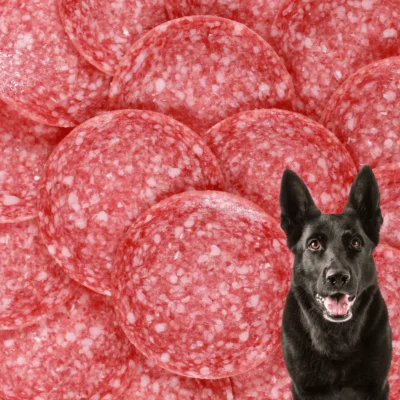Crab sticks are a popular seafood snack, enjoyed by many people. But can dogs eat them? The simple answer is yes, dogs can eat crab sticks, but it’s not recommended as a regular part of their diet. It’s crucial to understand the benefits and potential risks associated with feeding crab sticks to your dog.
In this article, we will cover everything you need to know about feeding crab sticks to dogs. We’ll address common questions, risks, and benefits associated with giving crab sticks to dogs. Additionally, we’ll explore safe and healthy alternatives to crab sticks for your furry friend. Keep reading to learn all you need to know.
Are Crab Sticks Safe for Dogs to Eat?

Technically, dogs can eat crab sticks, but it’s not advisable to include them as a regular part of their diet. Feeding them occasionally is the safer approach. Crab sticks contain potentially harmful ingredients for dogs, such as high quantities of sodium, iodine, and cholesterol. Additionally, they contain artificial additives that can be detrimental to their digestive system’s health.
Do Crab Sticks Have Any Benefits for Dogs?

While crab sticks are generally considered safe for dogs in small amounts, it’s essential to note that they do not offer significant nutritional benefits for dogs.
Here are some potential considerations regarding crab sticks for dogs:
- Lean Protein: Crab sticks contain a good amount of lean protein, which can help build and repair a dog’s muscle tissues. Dogs typically receive all the required protein from a balanced diet, so it is not necessary to feed them crab sticks.
- Omega-3 Fatty Acids: Crab sticks contain a low amount of omega-3 fatty acids, which are essential for a dog’s health. These fatty acids possess anti-inflammatory properties and can benefit heart and skin health in dogs. However, it’s worth noting that crab sticks provide only a small amount of omega-3s. To ensure your dog receives an adequate supply, consider incorporating other sources such as fish oil and flaxseed oil into their diet.
The Potential Dangers of Feeding Your Dog Crab Sticks:

Here are some of the potential dangers of feeding crab sticks to your dog:
- Sodium Toxicity: Crab sticks contain a high amount of sodium, which is not suitable for a dog’s health. Excessive sodium intake can lead to water intoxication, which can be potentially fatal for dogs. Symptoms of water intoxication may include vomiting, diarrhea, lethargy, seizures, and in severe cases, it can even lead to coma or death.
- Iodine Toxicity: Crab sticks contain a significant amount of iodine, which can lead to thyroid problems in dogs. Thyroid issues in dogs may manifest with symptoms such as weight gain, lethargy, hair loss, and skin problems. In severe cases, it can even lead to heart failure and other serious health problems in dogs.
- Cholesterol: Crab sticks contain a significant amount of cholesterol, which can lead to an increase in your dog’s cholesterol levels. Elevated cholesterol levels may contribute to heart disease and other health problems in your dog.
- Artificial Ingredients and Preservatives: Crab sticks often contain artificial ingredients and preservatives that can negatively impact a dog’s digestive system. These artificial ingredients can be difficult for dogs to digest, and some dogs may also develop allergies to these additives. Allergic symptoms in dogs may include skin irritation, itching, vomiting, and diarrhea.
- Choking Hazard: Crab sticks can also pose a choking hazard for dogs if they are not cut into small pieces, potentially getting stuck in their throat and blocking the airway.
- Parasites: Some people feed raw or undercooked crab sticks to dogs, which may contain parasites. These parasites can lead to various health problems in dogs, including vomiting, diarrhea, and weight loss.
In addition to the potential risks mentioned above, crab sticks are high in calories and fat. If your dog consumes crab sticks daily, it can lead to obesity and other health problems in dogs.
Right Ways to Feed Crab Sticks to Dogs:

As discussed, it is not recommended to feed crab sticks to your dog regularly. If you still wish to give them to your dog, it’s essential to follow safe methods. Here are some proper ways to feed crab sticks to dogs.
- Don’t Feed Raw Crab Sticks: Always cook crab sticks properly before feeding them to your dog. Raw crab sticks may contain parasites that can be harmful to your dog’s health.
- Cut in Small Pieces: Crab sticks can be a choking hazard for dogs. To avoid them, cut them into small pieces and then feed them.
- Remove Bones or Shells: Eliminate any bones or shells from crab sticks, as they can pose a choking hazard and lead to internal injuries.
- Avoid Spices: Try to avoid crab sticks that contain spices or other seasonings that can be harmful to dogs.
- Feed in Moderation: Feed crab sticks in small amounts on an occasional basis. They contain high levels of sodium, iodine, and cholesterol, so it’s important to offer them in moderation to your dog.
- Monitor Your Dog’s Health: After giving crab sticks to your dog, closely monitor their health. If you observe any signs of illness, such as vomiting, lethargy, diarrhea, or swelling, stop feeding them and contact your veterinarian immediately.
Here are some additional tips for feeding crab sticks to dogs:
- Try mixing crab sticks with other dog food. This can help reduce the chances of dogs getting stomach upset.
- Include crab sticks in your dog’s meals, but avoid giving them as snacks to prevent overeating.
- Store the crab sticks in the refrigerator to prevent spoilage.
Safe and Healthy Alternatives to Crab Sticks for Dogs:

Here are some safe and healthy alternatives to crab sticks for dogs:
- Plain Cooked Meat: Chicken, turkey, beef, or fish are some meat options you can feed to your dog instead of crab sticks. These are healthy and nutritious treats that offer many benefits to dogs. Just make sure to cook the meat thoroughly and remove all bones and excess fat before feeding it to your dog.
- Eggs: Eggs are also a good option. They are a good source of protein and contain many other essential nutrients. If you want to feed eggs to your dog, make sure to cook them; don’t feed them raw because raw eggs can contain harmful bacteria that are not good for a dog’s health. You can feed scrambled or hard-boiled eggs.
- Fruits and Vegetables: There are many healthy and safe fruits that you can feed to your dog. Some good options include carrots, apples, bananas, and blueberries. Avoid feeding them grapes, raisins, and onions, as these can be toxic and harmful to them.
- Dairy Products: Dairy products like cheese and plain yogurt are generally safe for dogs. However, it’s important to feed them in moderation because some dogs may be lactose intolerant. Begin with small amounts and monitor their tolerance.
- Dog-specific treats: Many treats are safe, healthy, and specially designed for dogs. These treats are readily available in the market and are made with natural ingredients. That’s why they are low in harmful components.
If you are still unsure about whether a particular food is safe for your dog, it is best to consult with your veterinarian first.
Conclusion:
In conclusion, while you can technically feed crab sticks to your dog in small quantities, it is not recommended for regular consumption. Crab sticks contain several harmful elements, including high levels of sodium, iodine, and cholesterol, as well as artificial ingredients that may be detrimental to your dog’s health. They can also pose a choking hazard if not cut into small pieces and present other potential issues.
It is advisable to consider healthier and safer alternatives for your dog’s diet. Good options include plain cooked meat, eggs, fruits, vegetables, and dog-specific treats.
References:
“Can Dogs Eat Crab Meat?” By Purina, https://www.purina.co.uk/articles/dogs/feeding/what-dogs-eat/can-dogs-eat-crab
FAQs About Dogs Eating Crab Sticks:
Q: It safe to eat raw crab sticks?
No, dogs should not consume raw crab sticks due to the presence of harmful bacteria, such as salmonella and listeria, which can lead to food poisoning. Common symptoms of food poisoning in dogs include nausea, vomiting, diarrhea, cramps, and fever. In severe cases, it can even be life-threatening to dogs.
Q: Can dogs eat imitation crab sticks?
Yes, it is safe for dogs to eat imitation crab sticks in moderation. They are made from various seafood products such as pollock, surimi, and artificial crab meat. Starch, sugar, and salt are present in significant amounts. However, it’s important to remember that they offer little to no nutritional benefits for dogs. Imitation crab sticks contain high levels of sodium, iodine, and cholesterol, as well as artificial ingredients that can lead to digestive problems in dogs.
Q: How many crab sticks can a dog safely have?
It is recommended to feed only one crab stick per day. This is because they are high in sodium, iodine, and cholesterol, which can be harmful to a dog’s health. If you’re feeding crab sticks for the first time, start with a small amount and then monitor your dog’s health. If the dog tolerates it well, you can gradually increase the amount.
Q: How to store crab sticks for dogs?
You can follow these tips to store crab sticks for dogs:
- Begin by cutting them into small pieces to prevent choking hazards.
- Place the crab sticks in an airtight container to keep them fresh and prevent them from drying out.
- Store them in the refrigerator, where they will remain safe to feed for up to 3 days.
- If you don’t plan to use them within 3 days, consider freezing them. Frozen crab sticks can last for up to 2 months.
Remember, when thawing frozen crab sticks, place them in the refrigerator overnight. Avoid thawing them at room temperature, as this can lead to bacterial contamination.












